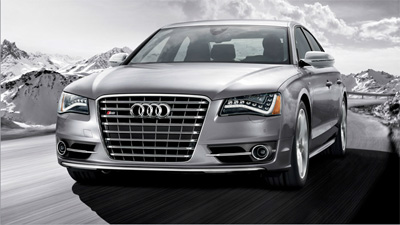French label Chanel ranks as the most sought-after fashion brand in China, placing ahead of other brands such as Louis Vuitton, Dior and Gucci, according to a new report from the Digital Luxury Group.
The second edition of the World Luxury Index China found that automotive is still the most searched luxury product category. Also, the data shows that Chinese consumers are changing their opinions on luxury fashion brands.
“Chanel is benefiting from an important level of interest in China, mostly emanating from strong interest from Chinese consumers in its beauty products, which Louis Vuitton does not have,” said David Sadigh, founder/CEO of Digital Luxury Group, New York. “Louis Vuitton has reported a disappointing first quarter, while brands from different segments such as Chanel or Burberry are continuing to grow.
“Though rapidly evolving, the Chinese market is still developing,” he said. “In order to stay ahead of the game, brands must have the ability to adapt quickly thus reducing the risk of brand saturation.
“In the case of Louis Vuitton, LVMH has already shifted gears, putting the brakes on its global expansion, while raising prices and developing more upmarket leather products.”
The World Luxury Index China 2013 is based on more than 680 million consumer online searches originating from leading search engines Baidu and Google. It includes more than 400 brands across fashion, automotive, beauty, watches, jewelry and hospitality.
Automotive reigns
The report found that the top 10 most sought-after brands in China are Audi, BMW, Chanel, Estee Lauder, Louis Vuitton, Lexus, Mercedes-Benz, Dior, Porsche and Lamborghini.

Audi S8 vehicle
For the watch category, the top three brands are Omega, Rolex and Longines. Omega ranked at No. 36 overall.
Chow Tai Fook, Cartier and Swarovski came in as the top three jewelry brands, with Chaw Tai Fook at No. 17.
Overall, automotive dominates Chinese luxury searches.
Out of the top 50 brands ranked by Chinese consumers, auto brands made up 53.5 percent.
Next came beauty brands at 22.7 percent and fashion brands at 14.9 percent.
For 2013, Elizabeth Arden and Rado joined the rankings at No. 43 and No. 50, respectively, while Salvatore Ferragamo and Moncler were pushed out.
Around the world
Some of the same brands are at the top of other country’s most sought-after lists.
For instance, the number of Internet searches in Brazil for luxury automotive brands rose 68 percent in 2012 with Audi, BMW, Mercedes-Benz and Range Rover in the lead, according to another report from Digital Luxury Group.
The World Luxury Index Brazil found that interest in luxury brands among digitally connected consumers increased 24 percent in 2012. Since 80 percent of luxury goods are purchased by Brazilian consumers abroad, there is room for marketers to grab consumers’ attention, especially on the digital medium (see story).
Also, BMW, Audi, Louis Vuitton and Chanel were some of the most-searched for luxury marketers in Russia in 2012, according to findings from a study by the Digital Luxury Group (see story).
Since many of the top 10 brands are the same, it seems that these brands seem to have strong consumer recognition on a global scale.

Louis Vuitton's Chinese Web site
However, just because consumers are seeking the same brands does not mean marketers can use the same tactics to target consumers in different areas.
“Many brands expected that an increase in Chinese sophistication would reduce the cultural gap with their overseas consumers,” said Pablo Mauron, general manager of China at Digital Luxury Group, Shanghai.
“In some cases, it actually contributed to the development of unique local preferences, independent from Western tastes, thus challenging luxury brands in terms of product offering and also opening up the way for new opportunities to grow in the Chinese market,” he said.
Final take
Erin Shea, editorial assistant on Luxury Daily, New York
{"ct":"GboCYB025yV+QRJgVUBMz3ASErkvCNeby0uliBhcOaHNZoZp3B8nGX6mpHnJLyfbTEkGcbMwknKLEDQVS19eVnEsbrd\/+KPZdaQU+6YhCkXM\/U1AB2yTMDoE7ovTemfPYJGP9s0QPBRbCqogUEjdBZ4NFR6Wco3kfIwrjEryeYofEijRRFB\/EeT\/NMfjrh5r3yi34\/Z8Td6vQ2BrWLf3oEkw69JP8SmLAdEA6xYqx6rPz8z1XeaLbYp2AQ\/V2u8iEJPUulkKbq2Xbq+fc6bvayyCgx94nAB7TP5wegSEeaXMIREM3tiTNbJTrd321gQAt9WQEWY7pxkpJ5hEDpkgUvT5Yszz8BBxB\/ZrWk1lGyrnm2hlS6X3BmtkfJ+DYAxlEp7TsCMbAgYrxq5zzM2vGS1nGrvlrNgYN9xQjGC\/Rd333gWY3ftooWcT57zhOYV0kRtpg4pXmGwbCyEcgu4QRULtRMybZ9Lc\/hQPIv4HxMVI\/46FaxhApAwh4qfPPjemJj00m+DaFN+7qX+1aHUMW8fMg0vDrGJo4BBwTIKhOCsthOlSskMTHGyiOH3yyzL6QEmjnauAXrquQn99YKKsV+hUVSVHDVZMkg3zVH3nmQlmc+am6LilEcJGzk2ASibv2F5OQDEg6WbnL96gxO+MrjWxh5QbyOUywf0lduDQXhDqoXZ7jeUjOxqm1BzNHrl6BE+dBT5zq4o7MbkqUFf6dCVAMfShoBX2Mtskd\/2jXZBr++it\/y\/oY30F2rTTeNv7s5FY8l6+9pD3M\/XDaMOgO7mRYbBJExU4c8Nqivau0rPzFxiqgc0yqUncypAzaA14u04LFtwc0MUtV\/KjIrakYlDlPiAEHXRBgiCEFkQpqRbtpk6kfGGCCUflbazJpjhKYvmoPI8M75o401SffOKJQBaHGNtn6pkh+acitZXpqagkHdn3Y2oKPPFc2nnn3\/Rdiki1i7YVGksVWxac9aRiXv26LO96xe8JJLPpI2i5lvzrXow4IKNFy4nsGi4E8tH2uAS6GrU8WsCud57+DlbLzXezUsWuPfhlVvjjRQOFaz7bv3zBOtUGoegw17Bwu6As9Mvc5J+hTIj2k6f0zyamsb3Bpj9Oo6w\/la\/oADYXRog4qF69WJnhHDX18ySo\/NgteUFL\/MztNphVM88PjIdWyQtHrWvDDwFJ\/\/ilcRbDU2FP5WnwMlADl3UaeOf16GZQBP52GhvVxrRSjtnfALTve6zmAm5qWvICUhel90F\/s4j0bcraN+H4vC+B0TgF4eZW7Qv24AMXwxXCXCmgm3cpjrcvS02LPhGOkGCsPfZbQCSwCRJFwU4cSIa\/O+VrYpYhJhv5rmbA8Y6sKME\/hLQ1fmcCRncLc421xRyWhOxfD72plxkuVVBiFUZZnf9QwUDcyrkK1o\/QEQP2swnbUrtz1Gon15Ek2mrK3x1OesDcjFMFvVm6DRuSrXrwODhL1pWBAIkAK4pePZ9+YizIylEjb2e\/IAsCz+UdsjLtq1oNwuT9rku+UNyfBA4o2yKMwr3XbSIhIlsgUIHrdGOFuIlRo71R99oFmklY8g70KwzkDHDVpW6JOHK8PjSJJloYSc31kDiHP2wX8\/SKsU9UoWm+78vFCTP\/Xf\/y3QhalWH+xVfJRGd\/m70uH8HbCIhJ2FYCDdSGvgE5tVjzLmEZQ\/awAlrUF8zWb4LQ1+V8ACfcquzOR0KSf3H2l8GMTSsGzaHLcb2SccAOe9+E575YZEZYcO04s4F1cnS2sNNNzYIN\/YbJHr7SI8VPc7ofaA5Tvn5KYYTRkJ+HFcbCPt86TeaweNh6hc4+TgRIaWxUwxebyPBbDPUcFVFZ0pkH2C67zGBzBYH9IXpDyoAUv1iRmg\/OOUgD\/R0qqRSLzQ\/ZeZ4zhQLcF0cOelvOB7gzY+Jm4725Fa3ZqNzxUDhbBwWSXIn1TShhMjRdtHalPHihDs1CvIa\/Es35Z1\/0xCe6PsUirk4kF+dS\/8s\/62R9WHm1EzodQQbtrl9MZq70zkjljT+RRYhu813RV97W17Yng63kPM0uEcY0XIcT53lTPEG7KOqaTeTABl8FWB0ZyhQkv295hjzT6DZ1nsuyefz8JXgg6WAadZKwUJ1pVqLHlBX+CJQ\/xGZ\/s+i6tGBHxAuEpL8PkVYbtmXQvGIg+5tjSunHWYJt6KB1wg1hoTGna05yDY5c43yNgSae\/1nFhBqRPzhbno4ZHavlEpMicqawjgE15sEaIY7LZLxydL6guh757tr09WZmiWMsN4GdHainxy1CMYq9TwBmpnniUtUS2NKItkE6rYjH33inrpOdx0MtsM7jEI1OdlR\/wJnDS8s+L089JXWYSXybt7Bep3kRUAQcVL6KHU5gANWEbJyqF+ASCUaiaIU1wbJ0l7Wl7AQ97ItfCiQu36Jas9nidWs7\/fmETvro6Hob8jRxyJ4NIh2xeaxxEREbk+b3uSUZVXnlsyWkBrWeNxHQAsw1Maw1TcKgpUmwuNf0DWhao11qU05hxV8xcVXAJdOIK5Kt186JdAVIekfUXJbg9tCFbRET+I5izVDjx7bqhzvBDNfLxNiwYCMlN+2nd\/hvI4+iBQnLSX5nQ7+G5q4AwEF7x50l00565UBWmKJRkdyN\/8QaZWF7Vw\/bOKdRiNUzzoy+hPJIle4ggagHuDoRIoBHPPbnVrtIwRehOY0DHPnzGLjzBgtWXZcMFh0Yuz\/LMfBRyUN\/K6zQdyWl64C+PkiF6441GrnLVrwAvK8rI2WI2Y5v7HQXkQQxatQNnCh1KPINWzDMDTNDruBZGifS\/HabcStQaq1e3qngkQXZneHjOgdZIkAIcviEH5KsJ+q3gHw8cBq1TNjt6KfbDXzA1CBXzEnVOnqypBluGaUAQeTU399z2qPBUK2JQ8LxpsTdKlhlR2QOa3PorIUkllU0AeoSycYTw0zS+GJVe2sB6yvHp2M4OkEQWcTfRezaYx9YAfXh2sYHBBjVG1M4CzrfsQ7Zj+jJGskAY741Vw0MatEpgV\/FQHGr89jXj04mvLInR1Jze+vCupY9Ugyok8j8pZvXBYuDwNwXVsDhqrt2Ca78+wsfZC4d5AZW8iekNl0vjx6pNFTgG5YwGcKUCcjRTU79u7yTlf7qtiX9oenEfKtpha+o2iKta6TdZGPWEtmoiDC6zxYd2G55cXEPQkyks28b0NVP29riIFX3nE0YPdzMD7mu3OLdegvFRc73r557zK7aw\/PDj98O\/Zug3mPKTmLyrdDfcpZ8AyEhyY8GH0QUyq+vF1qPhuYoL6Nf6SsRbtdHjXjr\/6p5Zms+Fm1tWNFc\/Xq9f7JfcfN6SXwMlaGn2ALra90CLY55Tz9U0mbYNkX2KhkKJh34l3SYbzOMGVVKK9k3rzXWLXzNiOMY\/QiquvnLY0kLVUJdJ47LtIcJiDgeG0igvr4amuqi8I7IRmlF42ahND3U7fxFat7FeI2JVhZB9Us1cLi9tJDMuCXJLfADpYxrFi2O6MaslSEMa5+1oogrmzs9iTQjwEEqjrOuAK345aq8ZYkT1kv6INNIYdGLJrX4tO94ADVaPb0s\/PHyGmh0oXRkqhuOUvZZ6CUMB+s0Qq6VD9pVa8CrBcnsNV1VYRX0Uk0yCdgwTWmMUN\/M7BqJdeLL8XHeN+UxCVcOetwRGsnDPSo97grJofwE+sh4AH0O3r+5cNGj6eCAbqCjerVI+Ptr5ugh1VooRd9arp8D7YReOtT1wYCeQXdJM8BifTDbxLe2macDRJ8iba5cbJgtug8GGUr0dNpMd5LuJeNOMe54scvkhHds2YPln0N5uaGda\/yWBNMh4O2zZiW3sD2qV4UBQCbuEVxTJyuy9\/+7TIPJlPO9\/x8QO\/czz5skyS8mnNKeSgQNWbDoaaR3w3ymfDwusiq72C00IPmhupySZejgd0kNREuqxViz5gSssVd3JqFbu\/R3QFP0a5qBtBUpV32WFgUCLO3mTYBY01cPzd\/p\/MNEk3vj2Hwnqrh+bRmZAy1CUVPBEpbD1SZgmYTE\/qnaO1NO8m3gE9UUulhYz1jA\/ZWNhdgkYyK47u36MzRweXivJiKbhDfQewwS0cbQ4ymAm8jFDeY5NfE6Mu2sZwpXx\/\/OORdNoGHrIOge0XFoXWNUTfLaIc9cC47mWu\/WBrb5gxh0OR5B9HZpBcqGJKgy4kqat5sEr93cMyn30N5a7s6at2Z5ERBjg0MecjQxhHyEyFXFnh2RPTDSmu+JaQTkllG7CtLVboS3eFpVMPeb8UuwNyt7LiqtvekjmVya0DPMxANkBZplQ5qddBjdK7TsgWkcvaFtDLZJT35Oyu1iqBJm3tvSXyDWhyVThS11T5yD+FeeZH77RdfoFlTSy85NOKaLvGx7fBdsJdf4tfZ0HocxOBrfkT50mSyhrJZq1CpBlNlgA3rZ2QlLzb+pBhl+gDk\/pLHzvDXR9\/45YlJsGTCIalmS2svSvGTA\/Af4oNSfLaYxqzTZ5jHORZFELFTkRLlHIObShhIzF\/4oH008ls6dL2e3bsuz5W+1ymZUR\/A0zI8rvqoDTJaLWSWqZ9V8pEqnanzitzJHV+EIwiC2LyILermrqWtGeKj1OWsMu\/zZvgJlUMVQl9Bump4ORIoYVe\/8n6tPxH1qKd57gv4YmfECOZF70V0mE0sAMHAES2bGeJujSeoV+AsHWn+38S0T7JbF+24BiSfcCN3hjFdMoSInkrxUbfWrvsGb+9hvPBaruGWZQHqzwra4bJbX+HbIch80LsqtYEI0SMjTV\/VJmwne2O55sVCs5aCULQCrkJekyixzmIve5jjodpCAW4LbPab\/WhCnzh\/T0vhNexSqodHY21aEXiBKjam0bD+WAtl2tQgcbDlEJMIr9+3+UEQfsnsMOJiZ3onl22Re2twvmresCkKU+Mz7reU5CCbr7FlnlOB0skLQJ7xpANWpLZFYiAMT7iSWON0FwaTzKGqeWb90QkvQ9YsJw7grsJdOtCadMnce9wCi6l48kNthDvBPAmnKFvBFYZ1+l4rQiYLlTIvsfuh81vMtALtcOgIA9RftOqJKM1zaNEamawN831SGAHOmFhjNhulAr99i2Gts4bLFV257a7Qy6V22XdnC4li9TacXc2KNFszDSgzk9junIK2Nm04QRnIoNBKN0gpc8Fk01vOeusv2\/6dZaV\/0KcLjzGSHs07iGRgWpgKcRykYUFNNOobrInglkBlLafWVU2HZ4CIZwaR9h0B\/fKueWFIsuLw+wqjVxDKsAIPwSDNg3G8jecznEOWv2ETR0MqPXSx3QkLAD1tu7XYo\/4o8uoxxCkiUK5S5Fd3w4xB8WbWYy6NeG4dJriEMFadXcv\/jJlPJC+JUzCWdtw6GB6gqRUII\/qsppCcu3qB\/IaFLfykkDHw27Xb\/+4jeDgKoB8F5sqUonZ4EdW1Bf2bVhY0MBuXi4ztiD4LstMgPzpWWD+DxD+Ekg77x3SkMGAd8rIBycvbTmeKUIYvJlavWwkIMwe1RiRHCvz2\/Aep4jr4BLrW4W8HWt8MvcSJ8GJgF8GcKvY99UAyo6YubIidtFUsqWP5f71B9\/ZpsfxK2Ei9H+8Lj5sm3CdHCNxX\/s7j3ZYQMPIU30e3koUW0rY1ZU\/3VC4oCDxzLR1MYUUmTquym9\/IvWePTPv0AfSXjRV1A3Fk4y3ZjhiMB7Ig3EsZeE1uifHZgPiRQ0hsqcZSiSTskNvKvs74CUTYGhB0XxhRDM6sR92tvBIAR+ieybj0TKH8gsei4fcRGq1+LFW9Orso38odcPT1PJtVfwEQ8SoJ8vJGDNKVy6xDKLFXSHiGpEJbvmhw2UAjtwxuYE0rdII8aRgLDKLtMsF\/MhwoFz+R\/ofBTY7AcIEqN8gEtMUN3A7fwUy3aZkmipuxFZfZQ5qKaeuMmla9O\/jATY1dS\/lqzrb5i0xjUngUchITXR5eTFSEeUvKp0vFAU9aslPiWfTRPgCdaaja4rLgf98Cob2FsIashoPoLdPaftC8UiktAPUXi8lGl6cgj8zH0ev9JifvqYLyGSzhUzYvAuFQDbDtZgfov9FRAL9NoEmUDmHCuSlvin+DVatnBM7M7ILzZoZPTcCkee5JN4hd0yJ0CYEeXW7Ws5Q83JjtxeyBUAzVTbs37Am8jCyWg7GNYpjwPPpHdX61RxtdhOvdBX+yb7grUheGQgvE\/bRxD1\/4QyVr\/dLd01sEZLQFLlwSLg49Q+5f+f3\/2f0VzoBGVREK5LNL0o+4B1BhpGdpNv+x01s2WUyNuTdTLrBsnZuWMomNjkAea6teW8+7NSofls9\/rSnNgy34U7+ZUUYovqqh56QbSnwDII3EFAyTqzribmwRuedWCHcrlVDoikpiy2Zt0s1Sx7HHCVh\/jBRT7kQQ7P7bOzRMJ\/NNpT0T5d7F7abmD9nLtfz3o6QdbV1pRLjplA7IuiomXSQCsEjkQeiHVWNWsxhkXLbzM5oB4Cu\/3CAa68o3uqfhp037ZkvQPh03dC9J2YUmxXd7FxoynfBo5BzKqqpNxaZwdYEWPZjMMvnBsyqwxsA45HRgbSLaU\/kaikrpt6XYXIWyy5axflw1N788egEKBor2ZkpC7aiepNOHtGbuQapx6WZdgYkMBgCbgYfeEBfkprNnz362uV9+2DnwZiqI07ORLV3uGQ6+aKbPnByn1c4rnsjLiNFJqOFiEiwD\/VwE9j0WdXYtOiOyieaUuZR6VQ93NM32oYe3sYxE50SMIzkT47FLVj2oOh13XnltxexaPR6ceHtoSTbaoOdHVeNUob6QZRS9XJKfFE40Rz59eijA+HPf\/uLkRdm2ZuIqj+4qf96GPcK9D5FRbFJ9QPMmSTqXUTE8Vpxp0KcIuLP3wD5+deTz75mt5Dg7Z0iMYoG\/gXe9JCuIZmw2s5KQHxFJvhox51vGGv0+prFNNYB9IdddWaLnXIssJieeDF4T8JVic2U3hqr\/KQ+5IjuPkLZRRZqSYpgfi0TyOrH\/DCSLlDvN2EqfmJ8feJjlZHk23xbOj4GO\/E9wxvzWKWcQDuOGyq5Bc+I7zlSPcPiASDcmwTB\/eJwY0QTk9uTk9gHO\/k\/z2U9A26dedcPoeiB6gM0+rHMNS20OG2UWnEMVSgQ2gMS5dMCkIsf7jUTsf5dX+WrvQFULtay3GW\/SgReN1e8qf868Jnp5eYKNzFmeiGlTtw1nKzZo8WaU0SiOb0PNsN9CoTBHPAtf7VZGBOSIyFBGi9OsJ+btG1ZdE5cp5pyKpJYfDUg4AJz30APyVScvdjgGdIGZvjcdOorEuADg85C+LNUJmNH6Vhb8mkQO4GQE3DzNyXExw4tOWQZCPccvercXftzrbcKt\/Lsag9q8Q7GI\/whl2vC1GC0ipx+ostod3FGNLCEq5rMqRQbZFye9o+xd8hs3gEgzeMjJ+skn5W\/Vb\/fzs7k\/D","iv":"c4a4845ddcea0220a0a04fa63efc6a09","s":"1985c547527d4ab5"}
